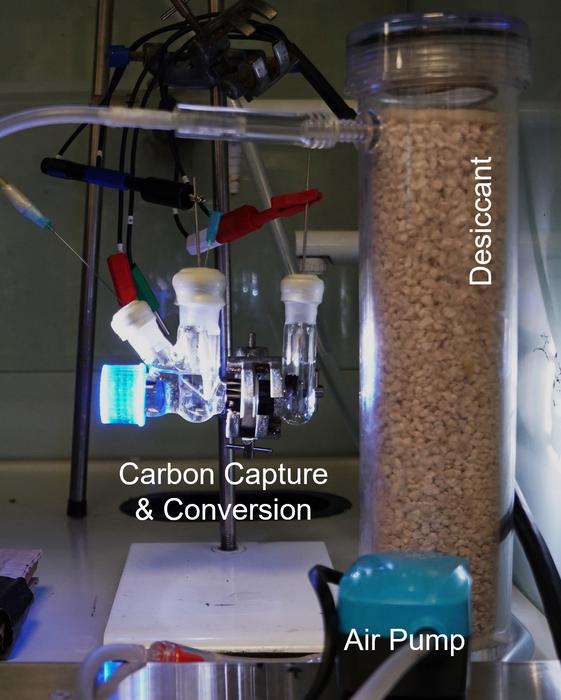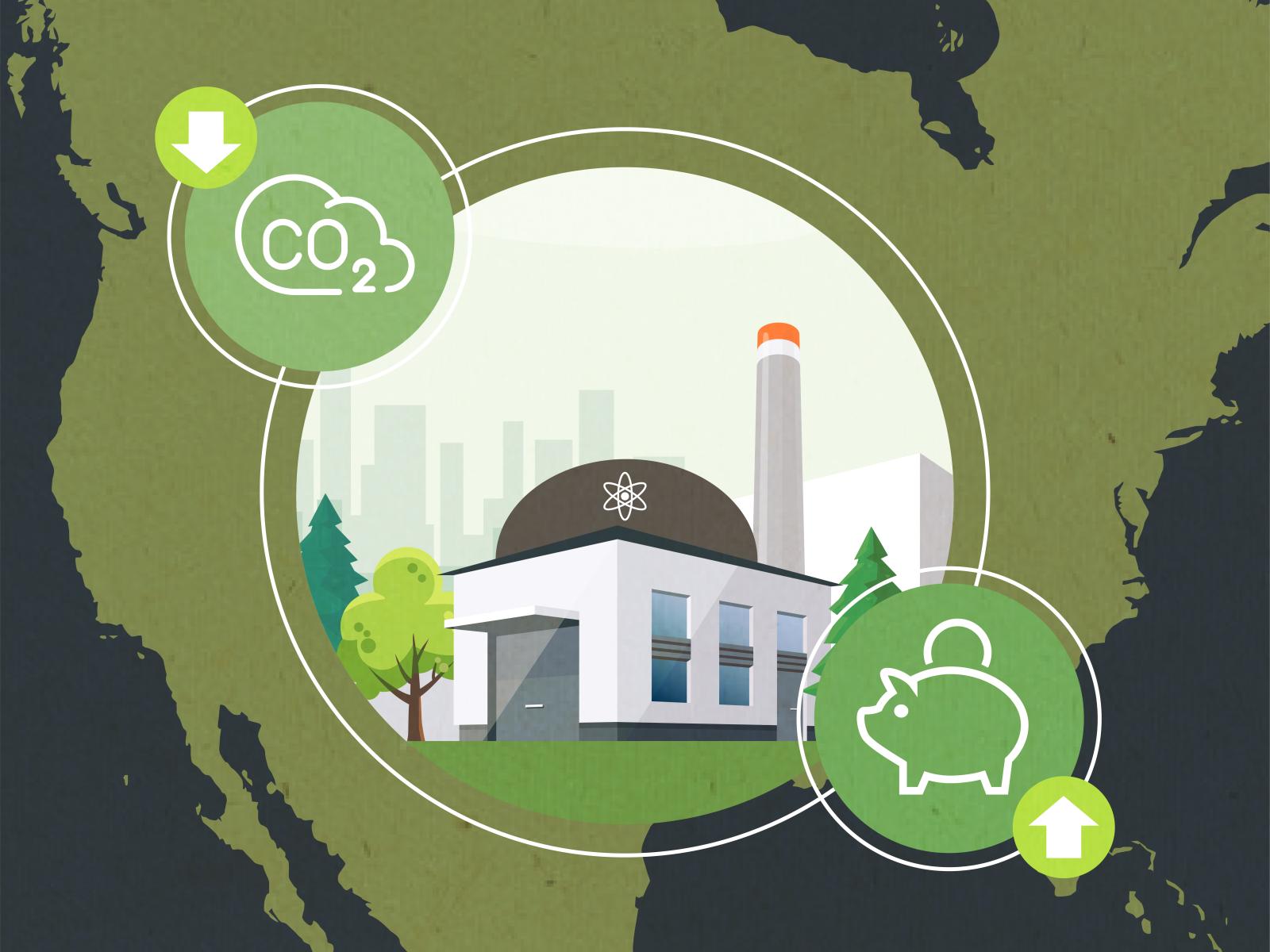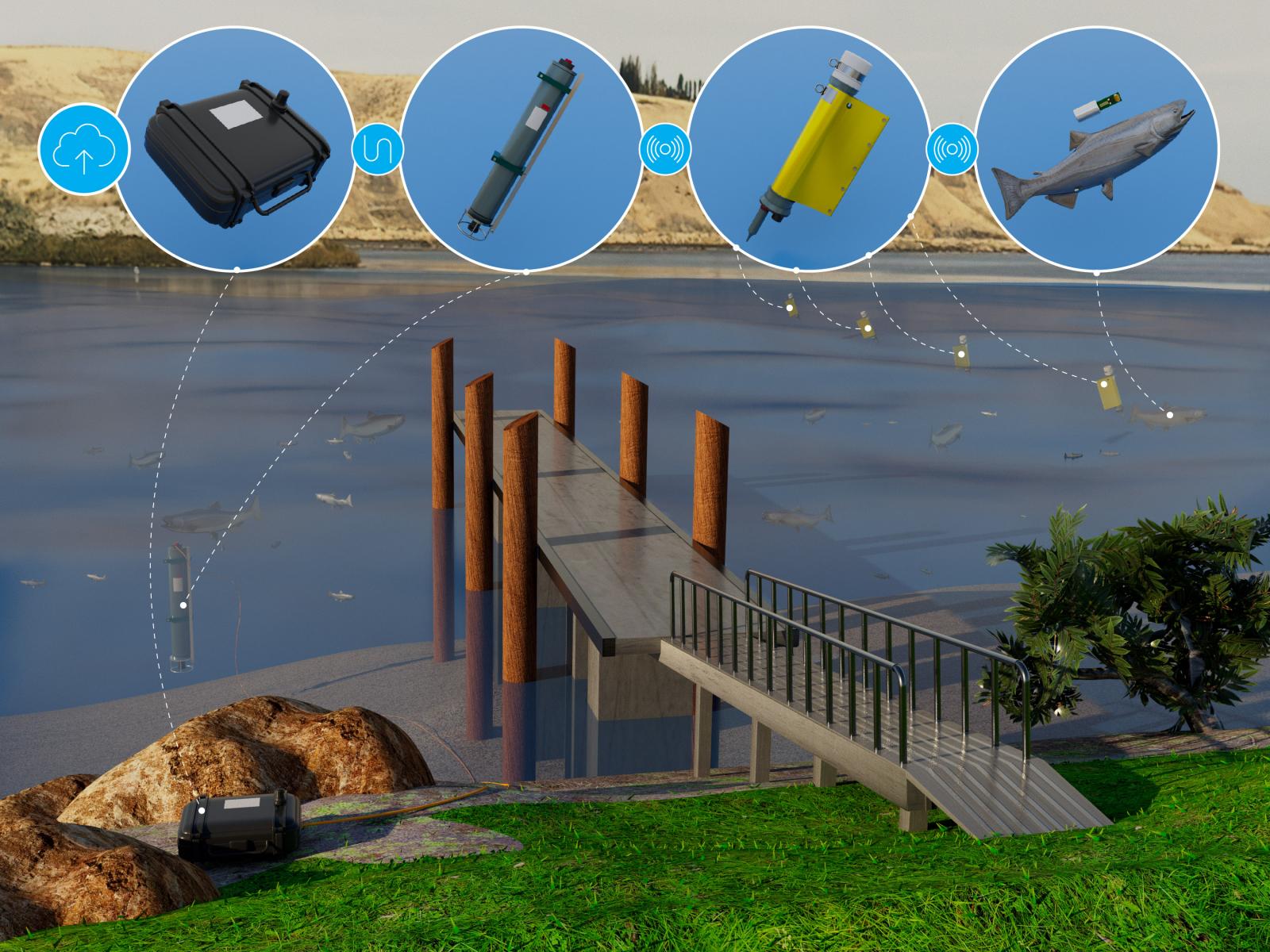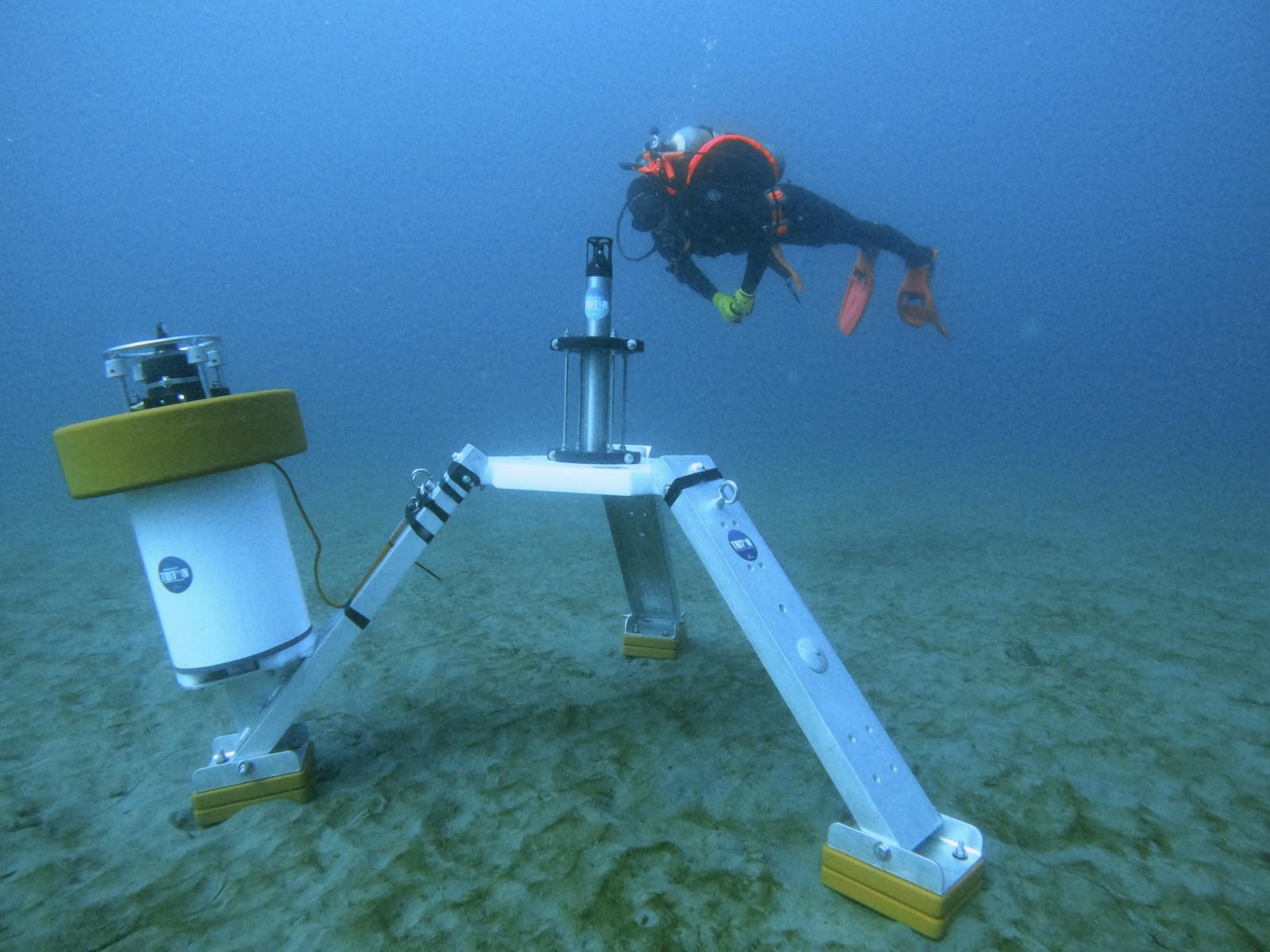Under the leadership of Empa scientist Mashael Yazdanie, an international research team is investigating ways to better plan for climate-resilient energy systems in the Global South.
Tag: Sustainable Energy
Empowering the hydrogen economy: The transformative potential of blockchain technology
Abstract As the world transitions towards sustainable energy solutions, the hydrogen economy is poised to play a crucial role due to its capacity to mitigate carbon emissions and solve energy storage challenges. This review assesses the potential of blockchain technology…
Exergoeconomic assessment of a high-efficiency compressed air energy storage system
Abstract Energy storage systems have a critical part in enabling greater use of intermittent energy resources. For a sustainable energy supply mix, compressed air energy storage systems offer several advantages through the integration of practical and flexible types of equipment…
Join Us at the International Conference on Sustainable Energy and Green Technology 2024 (SEGT 2024)
The Faculty of Engineering, Chulalongkorn University cordially invites you to attend the International Conference on Sustainable Energy and Green Technology 2024 (SEGT 2024). This year’s theme, ” Sustaining the Future with Green Energy and Clean Environmental Technology,” highlights our commitment to fostering sustainable solutions. The conference will be held in Bangkok, Thailand, from December 15-18, 2024.
DOE Announces New Decadal Fusion Energy Strategy
The U.S. Department of Energy (DOE) today marked the two-year anniversary of the Biden-Harris Administration’s launch of the U.S. Bold Decadal Vision for Commercial Fusion Energy with the release of the DOE Fusion Energy Strategy 2024 and an event at the White House co-hosted by the White House Office of Science and Technology Policy.

Next-Generation ShAPE™ Metal Extrusion Arrives
The next-generation ShAPE machine has arrived at PNNL, where it will help prove the mettle of the ShAPE extrusion technique. ShAPE 2 is designed to allow researchers to produce larger, more complex extrusions.

Powering Up to Solve Challenges in Energy Storage
In 2006, battery research was practically non-existent at PNNL. Today, the lab is lauded for its battery research. How did PNNL go from a new player to a leader in state-of-the-art storage for EVs and the grid?
Bristol leaps ahead in record £1 billion UK investment to train next generation of leaders to tackle major global challenges
Hundreds of talented scientists and engineers are set to advance solutions for some of the world’s most pressing challenges, ranging from reaching net-zero and developing sustainable energy to improving digital security and making the latest health breakthroughs.
How Much Dam Water is Needed for Fish and Energy?
New research identifies the most important factors in successful fish passage, pointing toward new options for flexible dam operations.
Big oil companies continue to expand fossil fuel extraction worldwide
Despite the growing social and political discourse in favor of energy transition and the greening of the industry, big oil companies continue to rely almost exclusively on fossil fuels to perpetuate their function of obtaining and concentrating energy.
A sustainable alternative to air conditioning
As the planet gets hotter, the need for cool living environments is becoming more urgent. But air conditioning is a major contributor to global warming since units use potent greenhouse gases and lots of energy.
Chemistry Student Studies Sustainable Energy Solutions at National Lab
Chemistry graduate student Oliver Solares is working toward finding solutions for clean energy and mitigating the impacts of climate change.
Chameleon-inspired coating could cool and warm buildings through the seasons
By mimicking a desert-dwelling chameleon, a team reporting in ACS’ Nano Letters has developed an energy-efficient, cost-effective coating. The material could keep buildings cool in the summers — or warm in the winters — without additional energy.
ORNL, UT’s Spark Cleantech Accelerator partner to support entrepreneurs
Entrepreneur-fellows in Innovation Crossroads, a Department of Energy Lab-Embedded Entrepreneurship Program at Oak Ridge National Laboratory, will complete the Spark Cleantech Accelerator, a 12-week program offered by the University of Tennessee, Knoxville, Spark Innovation Center at the UT Research Park.
Tulane expert available to speak on historic offshore wind sale in the Gulf of Mexico
Tulane University’s Eric Smith, associate director of the Tulane Energy Institute at the A.B. Freeman School of Business and expert on energy markets, including the oil and gas industry and renewable segments, is available to comment on the benefits to Louisiana…
University of Illinois study: Turning food waste into bioenergy can become a profitable industry
Food waste is a major problem around the world. In the United States, an estimated 30 to 40% of edible food is lost or wasted, costing billions of dollars each year.

Clean, sustainable fuels made ‘from thin air’ and plastic waste
Researchers have demonstrated how carbon dioxide can be captured from industrial processes – or even directly from the air – and transformed into clean, sustainable fuels using just the energy from the Sun.

Drones Fly Low and Slow for Radiation Detection
Unoccupied aerial vehicles, better known as drones, have rapidly advanced from a quirky, high-flying novelty to a versatile workhorse.

Rooftop solar panels could power one third of US manufacturing sector
A new study, published in IOP Publishing’s journal Environmental Research: Sustainability and Infrastructure, investigates the feasibility of meeting these electricity demands through on-site solar panel installations for different regions and manufacturing sectors across the United States.

Sustaining U.S. Nuclear Power Plants Could be Key to Decarbonization
As the world races to discover solutions for reaching net zero carbon emissions, a PNNL analysis quantifies the economic value of the existing nuclear power fleet and its carbon-free energy contributions.
Record ammonia production achieved with inexpensive cobalt catalyst at low temperatures
Ammonia (NH3) is one of the most widely produced chemicals in the world, with a production of over 187 million tons in 2020. About 85% of it is used to produce nitrogenous fertilizers, while the rest is used for refining petroleum, manufacturing a wide range of other chemicals, and creating synthetic fibers such as nylon.
Greener batteries
Our modern rechargeable batteries, such as lithium-ion batteries, are anything but sustainable. One alternative is organic batteries with redox-organic electrode materials (OEMs), which can be synthesized from natural “green” materials.
Gender and energy key to sustainable development goals
Most of us woke up this morning, used energy and technology to learn about the weather and the news, got a fresh cup of coffee, and went about our day informed and refreshed.
Nano cut-and-sew
A new process that lets scientists chemically cut apart and stitch together nanoscopic layers of two-dimensional materials — like a tailor altering a suit — could be just the tool for designing the technology of a sustainable energy future.

New “Camera” with Shutter Speed of 1 Trillionth of a Second Sees through Dynamic Disorder of Atoms
Researchers have developed a new “camera” that sees the local disorder in materials. Its key feature is a variable shutter speed: because the disordered atomic clusters are moving, when the team used a slow shutter, the dynamic disorder blurred out, but when they used a fast shutter, they could see it. The method uses neutrons to measure atomic positions with a shutter speed of around one picosecond, a trillion times faster than normal camera shutters.
Measuring 6,000 African cities: Double the population means triple the energy costs
Using a new dataset, Rafael Prieto-Curiel of the Complexity Science Hub and colleagues analyzed the coordinates and surface of 183 million buildings in nearly 6,000 cities across all 52 countries in Africa.

Metal Alloys to Support to Nuclear Fusion Energy
Tungsten heavy alloys show promise for nuclear fusion energy development, according to new research conducted at PNNL.
New Generator Rolls into Ocean Energy
New PNNL-developed nanogenerator harnesses the renewable energy in ocean waves to power sensors that provide critical weather and wave information.
Self-powered, printable smart sensors created from emerging semiconductors could mean cheaper, greener Internet of Things
Creating smart sensors to embed in our everyday objects and environments for the Internet of Things (IoT) would vastly improve daily life—but requires trillions of such small devices.
A greener internet of things with no wires attached
Emerging forms of thin-film device technologies that rely on alternative semiconductor materials, such as printable organics, nanocarbon allotropes and metal oxides, could contribute to a more economically and environmentally sustainable internet of things (IoT), a KAUST-led international team suggests.
Producing ‘green’ energy — literally — from living plant ‘bio-solar cells’
By collecting electrons naturally transported within plant cells, scientists can generate electricity. Now, researchers reporting in ACS Applied Materials & Interfaces have, for the first time, used a succulent plant to create a living “bio-solar cell” that runs on photosynthesis.
Story tips from the Department of Energy’s Oak Ridge National Laboratory, December 2022
Naturally derived materials fit for 3D printing; Next-gen hydropower starts with testing; Long-haul trucking meets megawatt-scale charging; New insights advance atomic-scale manufacturing
Fertilizing the Ocean to Store Carbon Dioxide
Iron-based fertilizer may stimulate plankton to pull carbon dioxide from the ocean, driving a carbon-negative process.
New technology creates carbon neutral chemicals out of thin air
It is possible to capture carbon dioxide (CO2) from the surrounding atmosphere and repurpose it into useful chemicals usually made from fossil fuels, according to a study from the University of Surrey.
Blessing or curse? How the pandemic and the war impact energy transitions
The Covid-19 pandemic and the return of military conflict to Europe are two of the present’s defining crises. A new IIASA-led study sheds light on their ramifications for the global energy system.
Simple Process Extracts Valuable Magnesium Salt from Seawater
A new, simple, and efficient flow-based method allows researchers to pull a useful magnesium salt from natural seawater using easily available chemicals.
Physicists Uncover New Dynamical Framework for Turbulence
Physicists at Georgia Tech have proven — numerically and experimentally — that turbulence in fluid flows can be understood and quantified with the help of a small set of special solutions that can be precomputed for a particular geometry, once and for all.

Faster Fish Tracking Through the Cloud
Near-real-time fish tracking using a new acoustic receiver developed by PNNL can support enhanced fish passage through hydropower dams.
Propane – a solution for more sustainable air conditioning
Current severe heatwaves that will likely increase in severity and frequency in the future are driving a rise in the use of air conditioners, threatening the environment with their high energy consumption and refrigerants with high warming potential. A new study finds that switching to propane as a refrigerant could lessen the global temperature increase from space cooling.

ORNL welcomes sixth cohort of Innovation Crossroads clean energy entrepreneurs
Oak Ridge National Laboratory’s Innovation Crossroads program welcomes six new science and technology innovators from across the United States to its sixth cohort.
Reducing energy consumption: A new test system for passive cooling materials
Passive day cooling is a promising technology for the sustainable reduction of energy consumption. It avoids the heating up of buildings by solar radiation and dissipates accumulated heat without external energy consumption.

Story tips: Split-second leak detection, serendipitous silicon and retrofitting untapped dams
ORNL Story tips: Split-second leak detection, serendipitous silicon and retrofitting untapped dams
Cooking Up a Conductive Alternative to Copper with Aluminum
The first-ever simulation of aluminum conductivity offers a recipe for an inexpensive, lightweight alternative to copper.

Mentoring the Next Generation of Marine Researchers
Program pairs PNNL experts with aspiring UW undergraduates who learn through doing on laboratory projects.

PNNL Makes Waves in New Issue of Journal of Marine Science and Engineering
A new journal issue is dedicated to highlighting the Triton Initiative’s recent work advancing environmental monitoring of marine energy.
Chemical Institute of Canada Gives Top Honor to University of Oklahoma Engineering Professor
The 2022 Robert B. Anderson Catalysis Award from the Chemical Institute of Canada’s Catalysis Division was presented to University of Oklahoma engineering professor Daniel Resasco, Ph.D., for his research that deepens the understanding of chemical reactions in the production of sustainable energy.
Energy, Maritime Leaders to Convene for DOE InnovationXLab Summit
Top scientists and officials from government, academia, Alaskan Native communities, and industry are heading to Alaska to focus on driving energy technologies for a more sustainable Arctic region.
Senator Cantwell, Science Leaders Help Break Ground on $75 Million Grid Storage Launchpad
New facility will accelerate energy storage innovation, increase clean energy adoption and grid resilience.
Sapphire fibre could enable cleaner energy and air-travel
Oxford University researchers have developed a sensor made of sapphire fibre that can tolerate extreme temperatures, with the potential to enable significant improvements in efficiency and emission reduction in aerospace and power generation.
ORNL brings big science to address the climate challenge
Tackling the climate crisis and achieving an equitable clean energy future are among the biggest challenges of our time. Oak Ridge National Laboratory, the largest Department of Energy science and energy laboratory in the country, is deeply invested in the big science capabilities and expertise needed to address the climate challenge on multiple fronts.